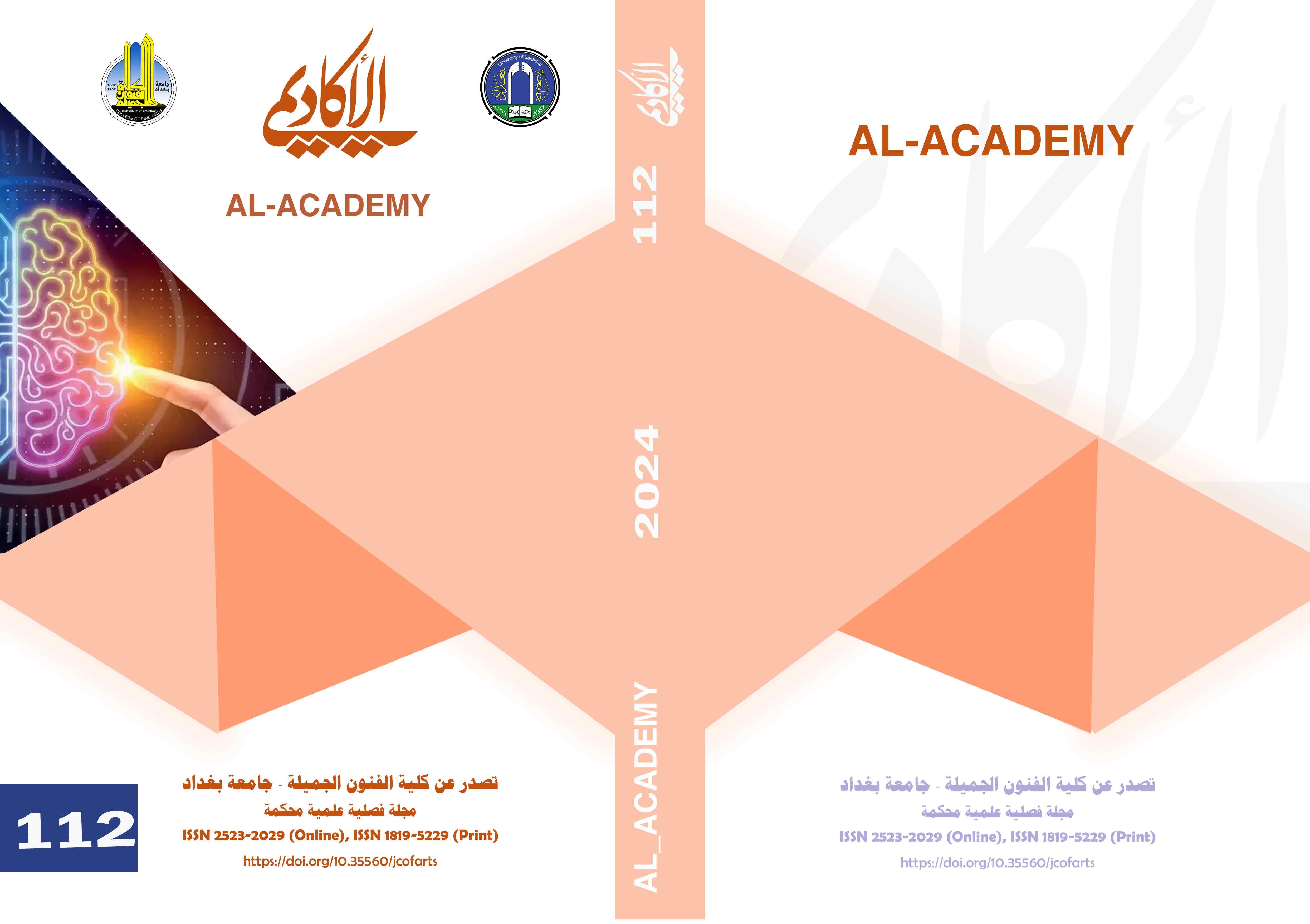The role of installation artists in Expressing contemporary issues
DOI:
https://doi.org/10.35560/jcofarts1304Keywords:
Processing in the vacuum, contemporary issuesAbstract
The ability of the contemporary artist to express issues, events, crises, disasters and wars has been evident since the first practices of art throughout history. When postmodern art appeared, it provided artists with different methods and implementations than were previously used; artists were able to employ the techniques and technology provided by the era, and this contributed greatly to highlighting the aesthetics of the artwork and its expressive values.
The current research came to shed light on the role of installation artists in expressing the issues experienced by the world and the changes that societies are witnessing. By tracing the most important practices of the art of installation in space as one of the contemporary trends that enabled the artist to aesthetically express a huge amount of ideas in a contemporary visual form. The research follows the historical method by tracing the historical roots of installation arts. As well as the analytical descriptive approach to analyze a group of artistic practices that employ the art of installation in contemporary artwork, and the most important issues and events that surround this artwork.
The research concluds that the installation art of has great potentials in linking the artist's ideas to the issues and events that revolve around him. The ability of the installation artists in appears in linking the form and content when expressing the issues in a contemporary artistic form with the artistic and aesthetic values of the concept of the installation art. The research recommends making more effort to reach the most important contemporary artistic practices and trends that deal with the most important global issues and events in a contemporary artistic style.
References
Al-Bawab, H. (2013). The role of space in contemporary plastic arts as an approach for teaching handcrafts. Journal of the Faculty of Education, (14), 693-725.
Al-Asmari, M. (2014). Installation arts in the United Kingdom of Saudi Arabia and the possibility of benefiting from it in the field of teaching art education. Unpublished Master's Thesis [Um Al-Qura University. Saudi Arabia.
Al-Yahayi, F. (2018). Postmodernism Arts: Installation Art: Analytical Reading in Some Models. Department of Publishing and Scientific Communication. Sultan Qaboos University. Oman
Al-Yahayai, F. Al-Amri, M. & Abudaladul, E. (2016). Installation Art as an Approach to Teaching Contemporary Art in the Art-Project Course for Sultan Qaboos University Students. Umm Al-Qura University Journal of Educational and Psychological Sciences. 7 (2), 129- 206.
Bashir, W. (2015). Transformations of the artistic vision of ceramic works in the installation art and their impact on contemporary ceramics. Paper presented at the second scientific conference: Qualitative Studies and the Requirements of Society and the Labor Market, Ain Shams University - Faculty of Specific Education. Cairo.
Abdel Hamid, S. (2001). Aesthetic appreciation: a study in the psychology of artistic appreciation, Kuwait. Alem almarifah.
Abd Rabbo, S. (2019). Installation arts as an approach to create formulations in the field of design directed to the child in the light of contemporary intellectual trends. Journal of South- South Dialogue, (6), 36-51.
Caldrola. E. (2020). On experiencing installation art. The Journal of Aesthetics and Art Criticism, 2020, 78:3, 339-343 Isabel
Vickery, J (2006). Installation art. Wiley. Volume29, Issue5
Downloads
Published
Issue
Section
License
Copyright (c) 2024 Ali Al-Jahouri, Fakhriya Al-Yahyai

This work is licensed under a Creative Commons Attribution 4.0 International License.













